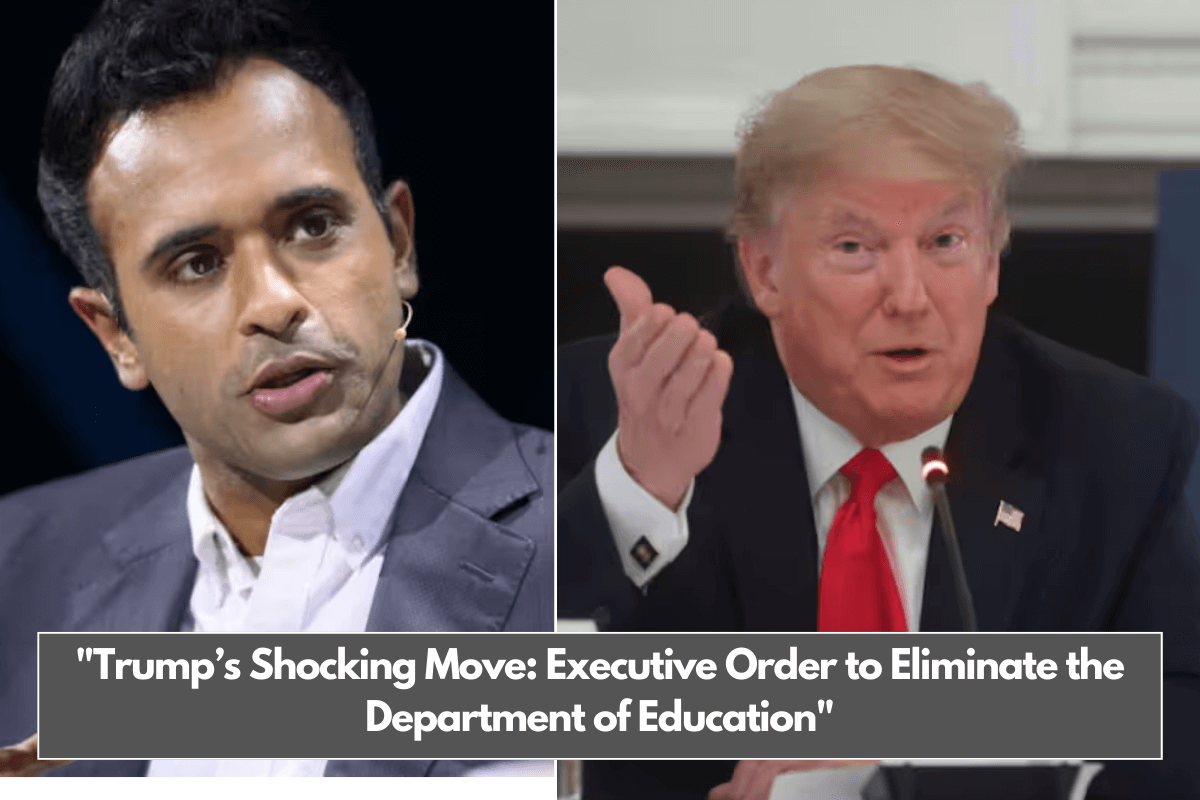The Trump administration is pushing forward with plans to eliminate the U.S. Department of Education as part of its broader effort to reduce federal influence on schools and shift control to the states. This move, in line with President Donald Trump’s campaign promises, has raised questions about its impact on students, teachers, and federal funding programs.
Trump’s Vision: Ending Federal Oversight in Education
President Trump, known for his strong stance against federal overreach, announced the development of an executive order that would initiate the process of dismantling the Department of Education. His ultimate goal is to let individual states take charge of their education systems.
“I told Linda [McMahon], I hope you do a great job in putting yourself out of a job,” Trump said, referring to his nominee for secretary of Education. McMahon, who previously led the Small Business Administration, has yet to be confirmed for the role.
Trump’s team plans to approach the department’s closure in two ways:
- Executive Action: Directing the secretary of Education to design a plan to scale down the department.
- Legislative Action: Pushing Congress to pass laws to officially abolish the department.
However, eliminating the department fully requires congressional approval, which may prove challenging given past opposition.
Historical Attempts and Challenges
Calls to abolish or merge the Department of Education aren’t new. During Trump’s first term, his administration proposed merging it with the Department of Labor, but the plan stalled despite Republican control of Congress.
In the past, budget-cut proposals targeting the department have often been blocked or reduced by lawmakers, who have historically been reluctant to cut education funding.
According to the Brookings Institution, Congress has resisted budget cuts to the department about 71% of the time. Even when Trump’s first administration sought to reduce its funding, the Republican-led Congress increased it instead.
Why Does Trump Want to Shut Down the Department of Education?
Federal Overreach and Culture Wars
On the campaign trail, Trump often pointed to the Department of Education as a symbol of excessive federal involvement in state matters. He tied it to debates on issues like diversity and critical race theory, saying, “We will drain the government education swamp and stop the abuse of taxpayer dollars to indoctrinate America’s youth.”
Poor Educational Outcomes
Trump criticized the performance of the U.S. education system, noting that the country spends more per pupil than any other nation but still ranks low in international assessments. His solution: give states more autonomy to run their schools without federal interference.
Promoting Private and Charter Schools
Trump has been a long-time advocate for policies that redirect taxpayer money toward private, charter, and religious schools through vouchers and other programs. Eliminating the department would likely accelerate these efforts.
What Happens to Key Education Programs?
While the plan aims to close the Department of Education, some federal programs may survive under other agencies. For instance, before the department was established in 1979, funding programs for low-income students and children with disabilities were managed by other federal offices.
Key programs potentially impacted include:
- Title I Funding: Helps schools serving low-income students.
- IDEA (Individuals with Disabilities Education Act): Provides resources for special education.
- Pell Grants: Supports low-income college students.
If the department is abolished, these programs could be reassigned to other agencies, but the exact details remain unclear.
Resistance from Congress and Public Debate
Despite Trump’s determination, Congress has historically opposed drastic changes to the Department of Education. Lawmakers from both parties recognize the importance of federal funding for public schools, particularly in underserved areas.
Human rights advocates and educators warn that abolishing the department could:
- Reduce oversight of education quality: Without federal monitoring, disparities in school funding and performance could widen between states.
- Harm vulnerable students: Programs supporting low-income students and those with disabilities may face disruptions.
- Increase inequality: States with fewer resources may struggle to maintain education standards without federal aid.
Elon Musk and Government Efficiency Measures
The plan to cut the Department of Education is also tied to broader government efficiency efforts. Elon Musk, who leads the Department of Government Efficiency, has played a role in targeting the department. This effort includes removing employees involved in diversity and equity initiatives, which Trump has criticized as contributing to “wasteful spending.”
On Friday, dozens of Education Department employees were placed on paid administrative leave as part of these efforts.
Trump’s plan to shut down the Department of Education is ambitious but faces significant hurdles. Even with executive action, Congress is unlikely to approve its full closure easily, given the importance of federal funding and oversight for schools across the country.
If the department were dismantled, programs for low-income and special needs students would likely need to be reassigned, but questions remain about whether states could handle these responsibilities effectively.
While the move is unlikely to happen quickly, it signals a major shift in U.S. education policy and reflects Trump’s broader goal of reducing federal influence over domestic affairs. The outcome will likely depend on political negotiations and public opinion in the coming months.
